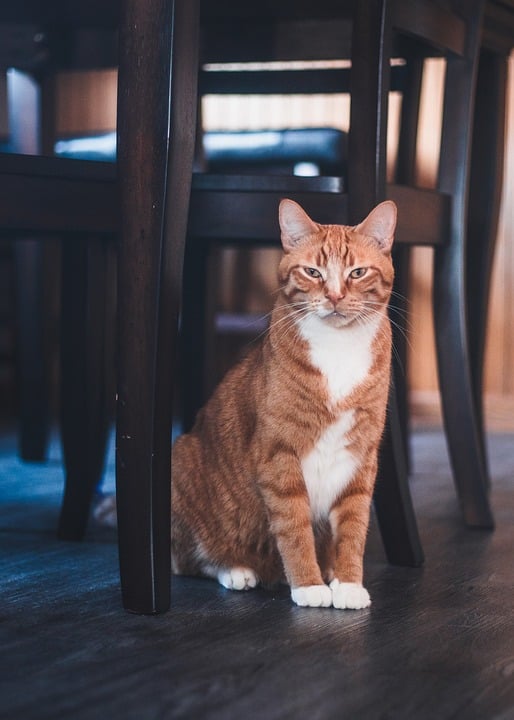
From Bites to Purrs: Transforming Your Cat’s Behavior with Positive Reinforcement Techniques
Cats are known for their independent and sometimes mysterious nature. However, they can also display behaviors that are problematic or even aggressive, such as biting or scratching. Understanding your cat’s behavior and utilizing positive reinforcement techniques can help transform these challenges into opportunities for bonding and mutual understanding. In this article, we’ll explore various strategies to enhance your cat’s behavior effectively and humanely.
Understanding Cat Behavior
Before diving into training techniques, it’s crucial to understand why cats behave the way they do. Cats are territorial animals, and their actions often stem from instincts or stress. Factors such as changes in the environment, health issues, or lack of stimulation can lead to unwanted behaviors. Observing your cat’s body language and triggers is the first step in addressing these issues.
The Power of Positive Reinforcement
Positive reinforcement is a training method that rewards desirable behavior, encouraging it to be repeated. Unlike punishment, which can create fear and anxiety, positive reinforcement builds trust and strengthens the bond between you and your cat. This method involves giving treats, praise, or affection immediately after your cat exhibits a desired behavior.
Identifying Rewards
Each cat is unique, so it’s essential to identify what motivates your furry friend. Some cats respond well to treats, while others may prefer affection or playtime. Experiment with different rewards to see what your cat enjoys most. Consistency is key, so ensure you have a stockpile of these rewards readily available for training sessions.
Training Techniques
Clicker Training
Clicker training involves using a small device that makes a clicking sound to mark the exact moment your cat performs the desired behavior. The sound is followed by a reward, helping your cat associate the action with a positive outcome. Start by clicking and rewarding your cat without any specific behavior to condition them to the sound. Once they understand that a click means a reward, use it to reinforce specific behaviors.
Target Training
Target training involves teaching your cat to touch a specific object, like a stick or your hand, with their nose or paw. Begin by holding the target close to your cat’s face and rewarding them for any interaction. Gradually increase the distance and complexity of the task. This technique can help redirect your cat’s focus away from unwanted behaviors and towards a positive action.
Redirecting Aggression
If your cat displays aggressive behavior, such as biting or scratching, redirect their energy towards appropriate outlets. Provide toys or scratching posts that allow them to express their instincts safely. When your cat begins to act aggressively, calmly redirect them to these items and reward them for using them.
Creating a Positive Environment
In addition to training, creating a positive environment for your cat is crucial for behavior modification. Ensure your cat has plenty of mental and physical stimulation through interactive toys, puzzles, and playtime. Regularly rotate toys to keep your cat engaged and prevent boredom.
Establishing Routines
Cats thrive on routine, so establishing a consistent schedule for feeding, playtime, and training can help reduce stress and anxiety. Predictable routines make your cat feel secure, minimizing the chances of unwanted behaviors stemming from uncertainty or fear.
Understanding Body Language
Your cat communicates through body language, and learning to interpret these signals can enhance your training efforts. Watch for signs of stress or discomfort, such as flattened ears, twitching tails, or dilated pupils. Recognizing these cues allows you to adjust your approach and maintain a positive training experience.
Patience and Consistency
Behavior modification takes time, so patience and consistency are essential. Training sessions should be short and frequent, with gradual increases in complexity. Celebrate small successes and avoid punishing mistakes. A positive, patient approach will yield better results and strengthen your bond with your cat.
Seeking Professional Help
If your cat’s behavior doesn’t improve with positive reinforcement techniques, consider consulting a professional animal behaviorist or trainer. They can provide personalized guidance and help address deeper behavioral issues that may require specialized attention.
Conclusion
Transforming your cat’s behavior from bites to purrs is a rewarding journey that requires understanding, patience, and a commitment to positive reinforcement. By identifying motivators, implementing effective training techniques, and creating a supportive environment, you can foster a harmonious relationship with your feline friend. Remember, every cat is unique, so tailor your approach to suit their individual needs and personality. With time and effort, you’ll see your cat’s behavior improve, leading to a happier, more peaceful coexistence.
#ChatGPT assisted in the creation of this article.








